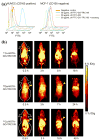Graphene: a versatile nanoplatform for biomedical applications
- PMID: 22653227
- PMCID: PMC3376191
- DOI: 10.1039/c2nr31040f
Graphene: a versatile nanoplatform for biomedical applications
Abstract
Graphene, with its excellent physical, chemical, and mechanical properties, holds tremendous potential for a wide variety of biomedical applications. As research on graphene-based nanomaterials is still at a nascent stage due to the short time span since its initial report in 2004, a focused review on this topic is timely and necessary. In this feature review, we first summarize the results from toxicity studies of graphene and its derivatives. Although literature reports have mixed findings, we emphasize that the key question is not how toxic graphene itself is, but how to modify and functionalize it and its derivatives so that they do not exhibit acute/chronic toxicity, can be cleared from the body over time, and thereby can be best used for biomedical applications. We then discuss in detail the exploration of graphene-based nanomaterials for tissue engineering, molecular imaging, and drug/gene delivery applications. The future of graphene-based nanomaterials in biomedicine looks brighter than ever, and it is expected that they will find a wide range of biomedical applications with future research effort and interdisciplinary collaboration.
Figures





References
-
- Lanone S, Boczkowski J. Curr Mol Med. 2006;6:651–663. - PubMed
-
- Gonsalves K, Halberstadt C, Laurencin CT, Nair L. Biomedical Nanostructures. John Wiley & Sons, Inc; Hoboken, New Jersey: 2007.
Publication types
MeSH terms
Substances
Grants and funding
LinkOut - more resources
Full Text Sources
Other Literature Sources
Research Materials

